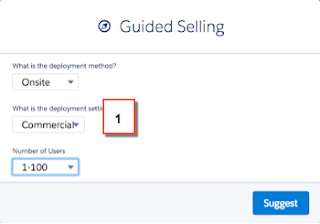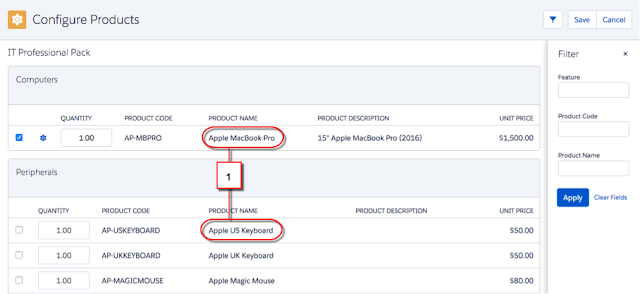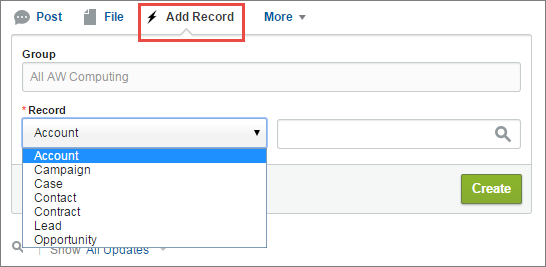Want to learn more about Salesforce's trusted cloud or just see how it's doing? You can head over to Trust.Salesforce.com at any time to see the real-time and historic status of Salesforce's availability, performance, and vulnerabilities.
If you’re in a highly regulated industry, we know that security is especially important to you. Salesforce commits to the highest security standards, providing you with transparency and real-time availability. And Salesforce scales that same standard to all its customers, no matter their industry.
So how do Salesforce do that? It’s not magic, folks, it’s multitenancy.
With Multitenancy in place, Salesforce handles the maintenance of servers, storage, bandwidth, hardware, and networks. That means that Salesforce' customers don’t have to spend time and money buying hardware and managing data centers. Salesforce shoulders that weight so that its customers can focus on innovation and evolving their business.
That, in a nutshell, is multitenancy: every customer shares the same infrastructure and runs on the same platform. But, like an apartment building, each unit is unique and accessible only to the owner.
Having all their customers under one roof allows them to share Salesforce's investment in trust and innovation with everyone. Hence Salesforce is able to deliver top notch security features wanted by smaller companies, and the flexibility that enterprise companies crave.
But is security in a shared environment really secure? What happens with upgrades? Answer is Salesforce's metadata-driven architecture.
Metadata is widely defined as “data about data”, but what does that really mean? When we talk about metadata at Salesforce, we’re talking about our metadata-driven architecture that allows each customer to customize their own instance of Salesforce.
Edgar's Mission, A customer of Salesforce created their own custom tab called "Animals" to help them track each of their barnyard residents. Using that Animals tab, employees at Edgar's Mission can add information about every sheep, chicken, and goat they work with. This is great for Edgar’s Mission, but it's great for you too! Maybe you don't call it “Accounts” or “Animals.” For you it may be “Stores,” “Patients,” or “Buyers.” It’s all up to you!
The custom tab, the custom fields, the automatic reminders, even any standard reports and Chatter they might wish to use—all of this is metadata. It's the structure of your Salesforce instance, with all of your custom and standard functionality.
Salesforce separates our customers’ customizations into a special metadata layer, so we can update and improve our platform in the background without touching any of their data or customizations. That means that we can give Edgar’s Mission (and all of our other customers) upgrades three times per year with great new features without altering their farm data or breaking their custom “Animals” tab. All of these standard and custom configurations, functionality, and code in your org are metadata. Part of the reason you can move so fast on the platform is that Salesforce knows how to store and serve you that metadata immediately after you create it.
Because their metadata exists in its own layer, Edgar’s mission can customize to their heart’s content. And instead of devoting a resource to developing an infrastructure and keeping things up and running, they can staff up where it counts for their most important customers... in the paddock.
Fueled by the easy accessibility of the metadata layer, the cloud, and Software as a Service (SaaS), this is, ultimately, the power of the platform. It allows you to innovate quickly, and get to market faster with solutions for your customers, partners, and employees—or even your sheep!
Salesforce designs its apps so that customers can do business exactly the way they want. It’s Salesforce' job to equip them with an infrastructure that can be customized and altered at any time to move as fast as they do. Multiple studies show that developing with Salesforce is 5 times faster than traditional application development.
Traditionally, if you wanted to build an app, you’d need hardware and software. You’d have to define access and security, setup reports and analytics, and then actually build the app. If you wanted the app to be mobile and social, you’d have to set that up separately.
Building an app with Salesforce is different. There is no installation of hardware and software, and there are standard options for defining security and user access, creating reports, and making the app social and mobile. Metadata allows us to have all of this pre-built in a separate layer for our customers, so all they have to do is add any customizations they may want as icing on the cake.
Components of Salesforce' Metadata-Driven Architecture
Salesforce' metadata-driven architecture allows it's customers to customize Salesforce in two different ways to fit their unique business needs. In each case, metadata is what carries over each customer’s unique customizations and automatically allows every app to deploy to mobile and account for varying currencies and languages.
- Configuration allows anyone to quickly and easily configure your applications with a point-and-click interface. This means you don’t have to rely on a developer to create the ideal apps for whatever business goals you’ve set. It could be as simple as renaming accounts to coincide with your industry, just like Edgar’s Mission did with their “Animals” tab. 80% of all our user customizations are made through these basic point-and-click configurations.
- IT sees the value in point-and-click too. Opening up simple app development to users gives developers more time to work on custom code for more advanced things like user interfaces and business logic. There’s no need for IT to build services like workflow, collaboration, dashboards, or mobile interfaces, or worry about managing its own infrastructure. Salesforce handles the scaling, performance, database configuration, servers, and storage.
- Creating custom code is slightly more complicated than configuration. When a company decides it needs advanced functionality, they can have a developer write custom code to achieve it. New features, functionality, and user interfaces help a business achieve exactly what it wants. And it’s entirely cloud-based, so your developer will only have to write it once to run it everywhere.
Point-and-Click Configuration for all
Custom Code for developers
Another way to tailor your Salesforce experience is to connect your back-office applications with APIs. If you’re a developer, you probably already know what an API is. But for those who are new to programming, API stands for Application Programming Interface, and it’s essentially a bridge between two pieces of software, allowing them to connect to each other and exchange information.
Since we made our metadata openly available through APIs, you can connect Salesforce to anything. That includes any of the thousands of our partner apps in the AppExchange. The possibilities are endless.


































